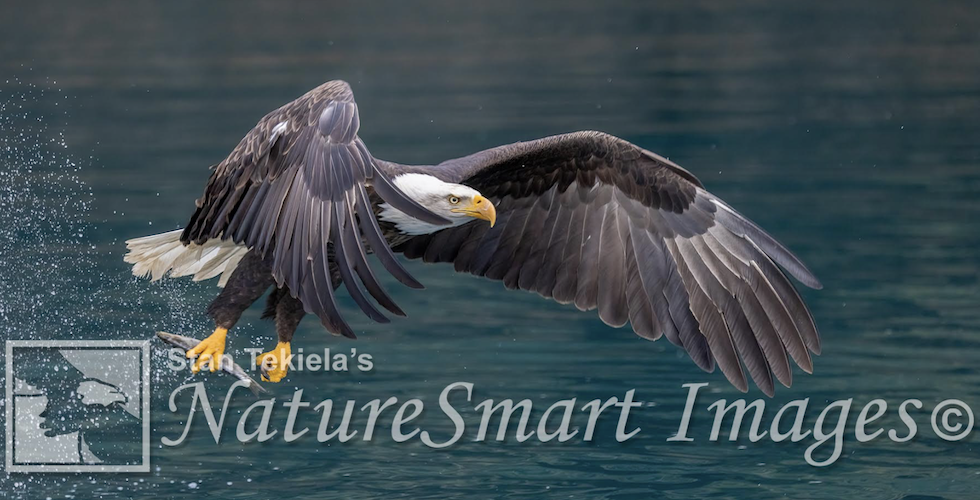
In Pursuit of the Right Image
Naturalist and wildlife photographer Stan Tekiela is often asked what animal he loves to photograph most. There is no easy answer to this question; time after time, he feels he disappoints people by saying that his favorite tends to be whatever he happens to be photographing at the time. Stan is more focused on the pursuit of the right image than on what his favorite animal is, as he finds them all amazing. It’s like asking a parent which child is their favorite. You love all of your children, and Stan loves all of nature.
However, he feels that some critters are easier to photograph than others. For example, when he photographed a large snapping turtle for a book project, he couldn’t capture what he felt was a decent or worthy image, no matter how hard he tried. The pursuit for the right image can be a lengthy one!
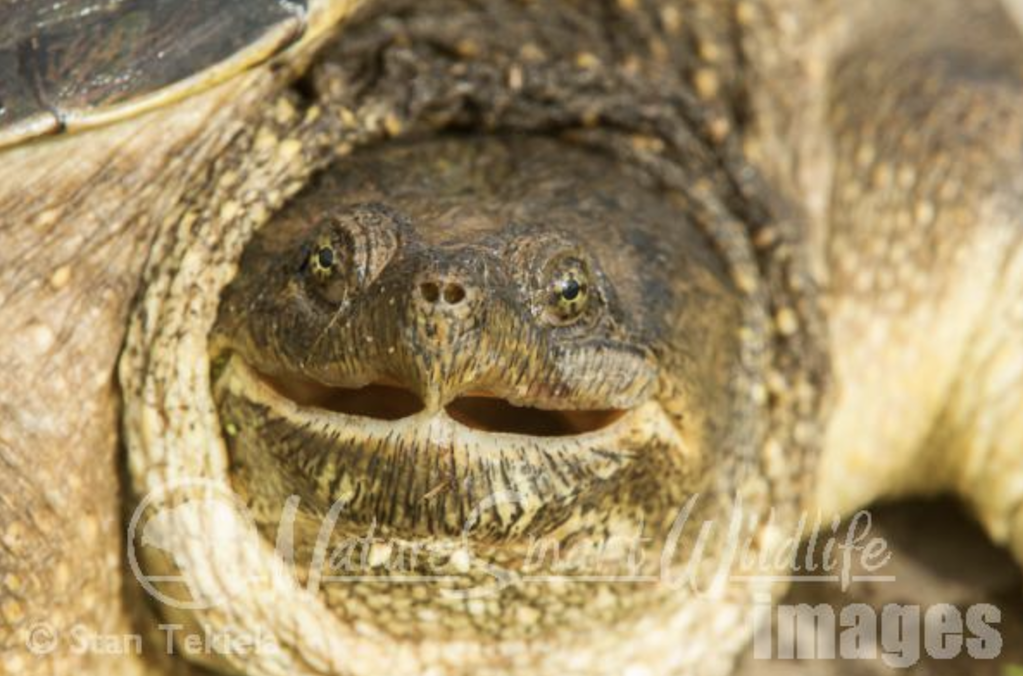
Recently, Stan spent 10 days in Alaska leading a photo tour to capture images of our national symbol, the Bald Eagle (Haliaeetus albicilla). This is a wonderful example of a bird that is supremely photogenic. It seems that any way you photograph this spectacular bird, the images always turn out to be stunning and award-winning. There is just something special about Bald Eagles when it comes to photography. Here is his report!
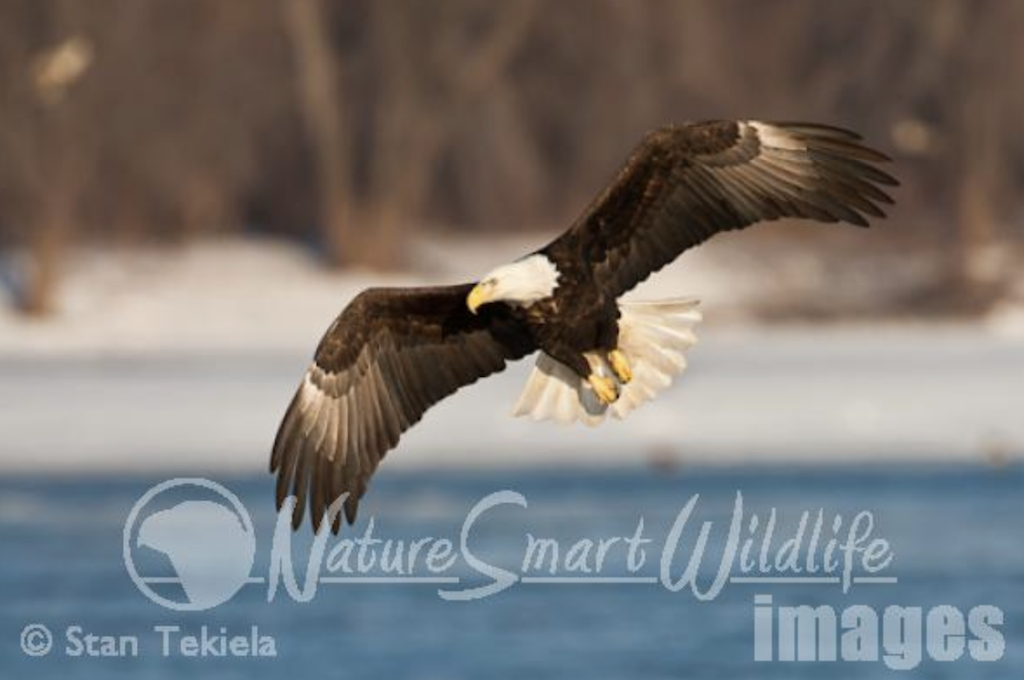
When I look back at the last 40 years of my career as a wildlife biologist, author, educator, and wildlife photographer, there weren’t many Bald Eagles around in the beginning. The population of the Bald Eagle tanked out in the mid-1900s. Due to widespread habitat loss, as well as both legal and illegal shooting or trapping, and the widespread use of DDT, which caused the eggshells of the eagle to be so thin that the eggs couldn’t be incubated without the parents breaking the shells, the Bald Eagle was nearly wiped out.
In the early 1900s it was believed that Bald Eagles would grab the legs of domestic animals, such as lambs and cows and even human children, leaving them severely injured. Of course, this wasn’t true at all, but Bald Eagles were shot by the tens of thousands—all in the misguided belief in a falsehood. By 1978 the U.S. Fish and Wildlife Service said that “the leading cause of direct mortality in both adult and immature Bald Eagles was illegal shooting.”
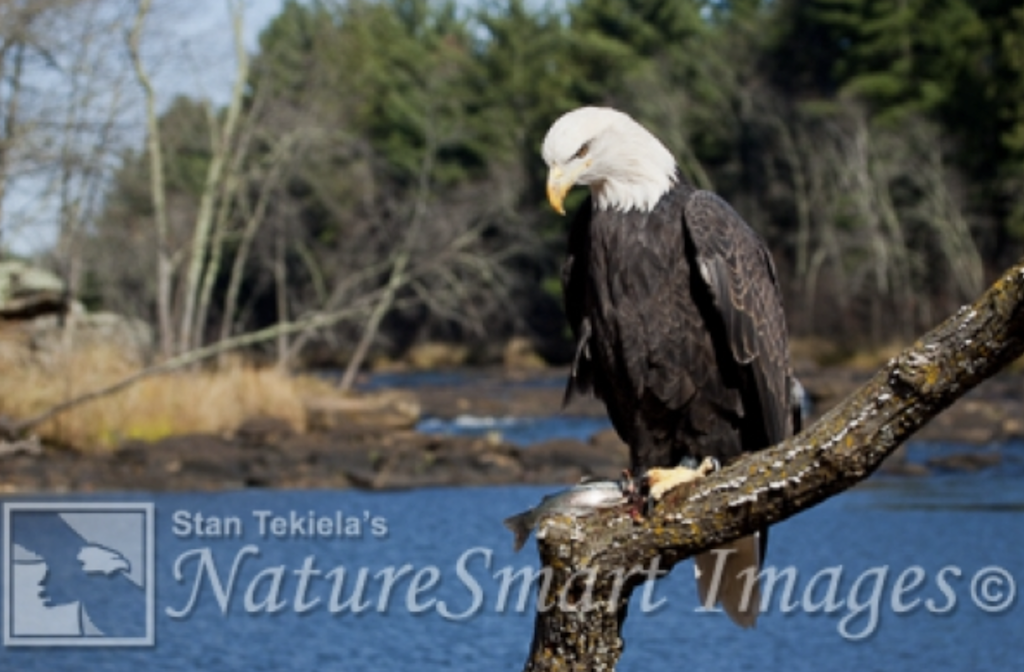
In 1967 the Bald Eagle was declared an endangered species. Amendments to our laws in the 1960s and 1970s increased penalties for violators; more importantly, in 1972, DDT was banned from use in the United States. DDT was later banned in Canada in 1989. By the late 1970s and early 1980s, it was estimated that only 100,000 individual eagles existed. So, over the past 40-plus years, the population of Bald Eagles has started to rebound, and now it’s not uncommon to see these magnificent birds on a regular basis. The Bald Eagle was removed from the Endangered Species list in June 2007, and it continues to do well. Today, there are an estimated 320,000 eagles.
The state of Alaska has the largest and most stable population of Bald Eagles in North America. So it is only natural that we would go there to capture some stunning images of these incredible birds. We spent four days on a small boat, cruising around the back bays, looking for eagles with an eye towards some beautiful backgrounds.
Each day we would meet the boat just before daybreak. We would take a 30-minute boat ride across the bay to search for eagles. We located several hundred eagles, who in midwinter tend to hang out together looking for food. There were so many eagles that it became a problem to decide which eagles and in what background we wanted to capture them in photos.
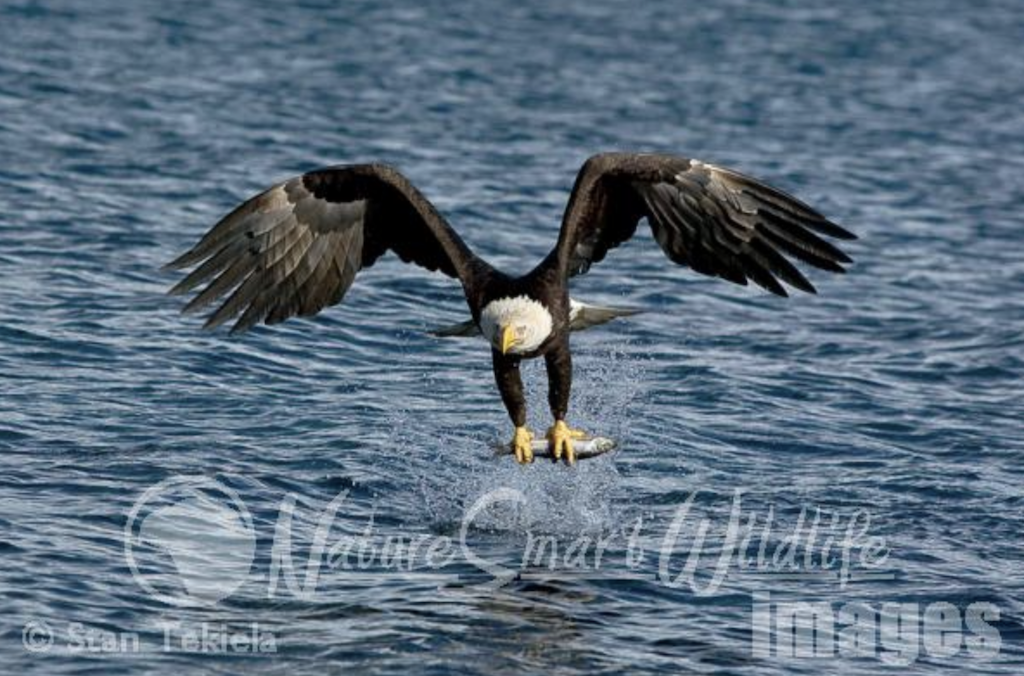
With the new mirrorless cameras, I am able to take 20 to 30 images per second. This is a good and a bad thing because each day I was taking more than 10,000 photos of Bald Eagles in pursuit of just the right image. Taking this many images allows me to search through a series and find just the one—with the eagle’s wing and body in the perfect position as it snatches a fish from the ocean. This kind of image shows the power, strength, and grace of these beautiful birds.
So here I am, weeks after the trip, still editing and whittling down the more than 50,000 images of Bald Eagles! But I am also looking back at all the wonderful experiences. The time it takes to edit these images is well worth it. If you want to take a photo trip to Alaska to photograph eagles, visit my website.
About the author: Naturalist, wildlife photographer, and writer Stan Tekiela is the author of more than 175 field guides, nature books, children’s books, wildlife audio CDs, puzzles, and playing cards, presenting many species of birds, mammals, reptiles, amphibians, trees, wildflowers, and cacti in the United States.
With a Bachelor of Science degree in Natural History from the University of Minnesota and as an active professional naturalist for more than 25 years, Stan studies and photographs wildlife throughout the United States and Canada. He has received various national and regional awards for his books and photographs.
Also a well-known columnist and radio personality, Stan’s syndicated column appears in more than 25 newspapers, and his wildlife programs are broadcast on a number of Midwest radio stations. Stan can be followed on Facebook and Twitter. He can be contacted via www.naturesmart.com.
You can follow Stan on Facebook and Twitter, or contact him via his web page. Stan’s nationally syndicated NatureSmart Column appears in more than 25 cities spanning 5 states (Minnesota, Wisconsin, Michigan, Illinois, and Pennsylvania) and is circulated to more than 750,000 readers.
For more stories about wildlife and nature, sign up for our newsletter now!


